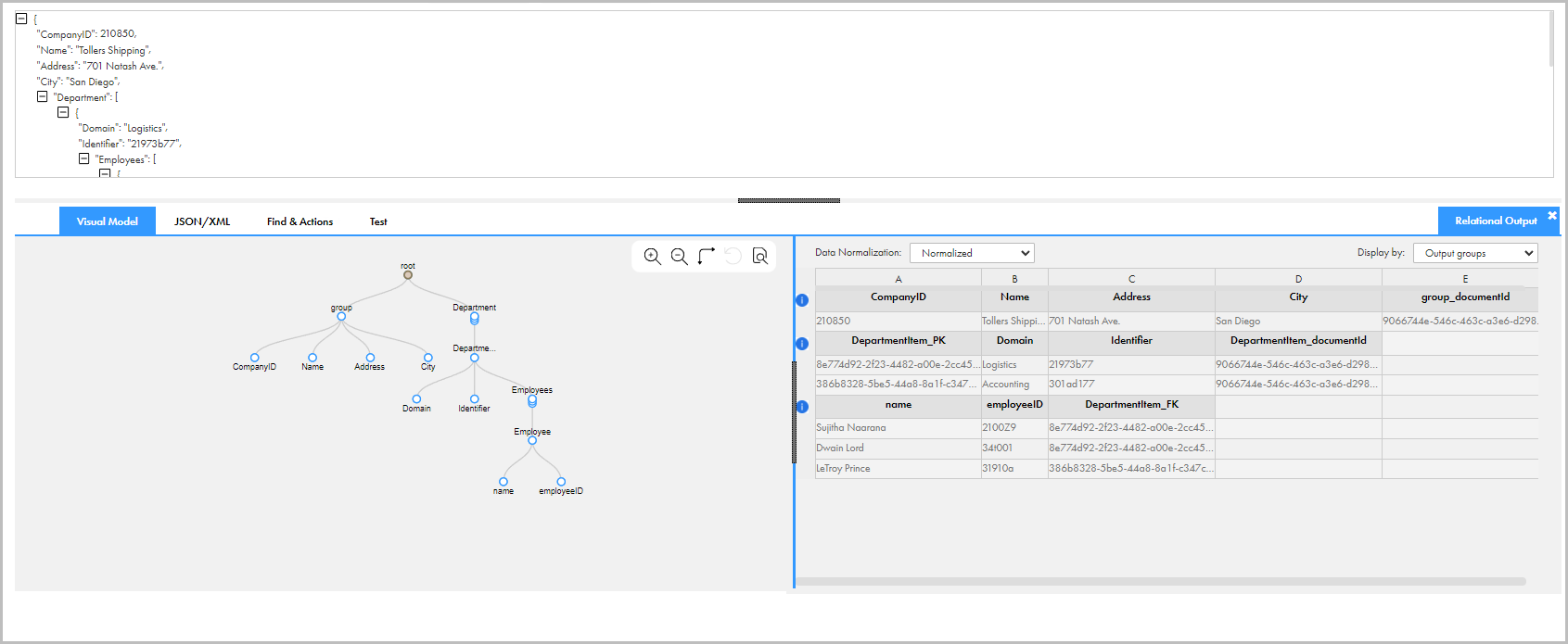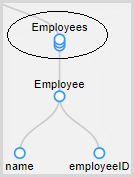Data Integration
- Data Integration
- All Products

{ "CompanyID": 210850, "Name": "Tollers Shipping", "Address": "701 Natash Ave.", "City": "San Diego", "Department": [ { "Domain": "Logistics", "Identifier": "21973b77", "Employees": [ { "name": "Sujitha Naarana", "employeeID": "2100Z9" }, { "name": "Dwain Lord", "employeeID": "34t001" } ], }, { "Domain": "Accounting", "Identifier": "301ad177", "Employees": [ { "name": "LeTroy Prince", "employeeID": "31910a" } ] } ] }

